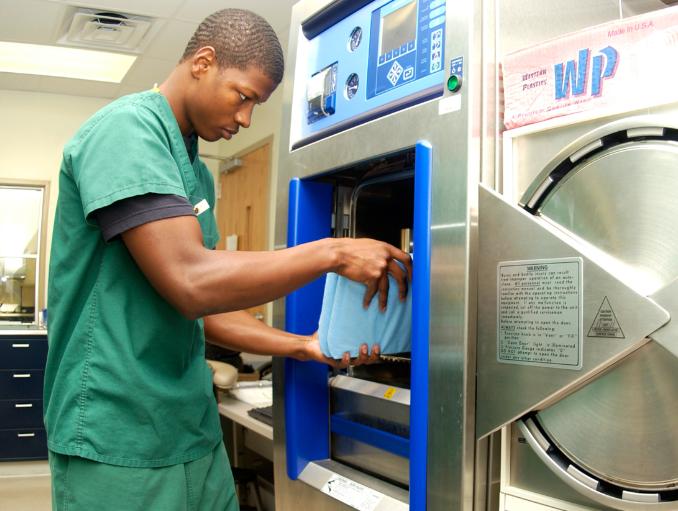According to research, practitioners that fail to utilize the autoclaving process on their dental handpieces are placing their patients at risk for cross contamination.

The Centers for Disease Control (CDC) established a specific set of guidelines regarding disinfecting and sterilization of dental instruments in facilities.
In these guidelines, the agency outlined that these dental instruments have the potential to become contaminated with debris from patients and that, as a result, those instruments should undergo sterilization by heat immediately following each use.
It goes on to explain that if a handpiece is unable to be sterilized through heat, that dental instrument should not be utilized within a practice.
“Small amounts of contamination may not be visible…spreading infectious material throughout the product….” – Patty Lovera
Autoclave is Necessary
Many dental practitioners mistakenly believe that placing barrier protection on the dental handpiece and wiping the device down with a specially-created disinfectant will eliminate the possibility of cross-contamination.
This is inaccurate.
Each dental handpiece should be completely autoclaved so that both the external and internal components of the angle of the instrument is completely sterilized.
The most productive means of sterilization of dental handpieces include utilizing chemical-based sterilizers that emit vapors, implementing the use of dry-type heat, and specially-designed autoclaves for dental handpieces.
You should never use the substance ethylene oxide gas for the purpose of sterilizing your dental handpieces.
Purchasing Factors
When shopping for handpieces for your dental practice, there are several different factors to consider.
First, you need to determine if its design is optimal for the autoclaving process. Next, you want to lean towards designs that will not result in an accumulation of natural debris. Next, you want to purchases handpieces that are composed of materials that have the ability to be sterilized over and over again.
An optimal choice is titanium.
Finally, you have to ensure that you have the proper equipment to sterilize your dental handpieces.
Sterilization Tips
When you obtain your dental handpieces, they must first be sterilized. Then, this process should be repeated after using the instruments on each patient. The following outlines some basic sterilization tips that will help ensure that your instruments are properly sterilized, while maintaining a high level of longevity:
- You should make certain that the entire surface of your dental handpiece is cleaned. This starts by rinsing the exterior with a mild detergent or wiping down with isopropyl alcohol to remove any type of bio debris from the unit. Never use cleaning agents using ammonium, chlorine, chemical-based cleansing agents, or any other substance that will dehydrate the unit’s spores and/or surfaces. It is preferred that you do not use disinfectant wipes or sprays that may enter the head and foul the turbine bearings.
- The next step to sterilization your dental handpieces is to lubricate the instrument completely. Lubrication should be placed until it is emitted from the head of the instrument. Be sure to run the instrument to expel any type of excess in lubrication oil.
- You should then sterilize the dental handpiece through autoclaving, based on the guidelines provided by the manufacturer.
If you follow these steps, you are sure to avoid the issue of cross-contamination.
Resources:
http://www.digitaljournal.com/pr/3637404
http://www.rdhmag.com/articles/print/volume-36/issue-6/contents/something-did-change.html
https://www.ada.org/~/media/ADA/Member%20Center/FIles/cdc_sterilization.ashx
